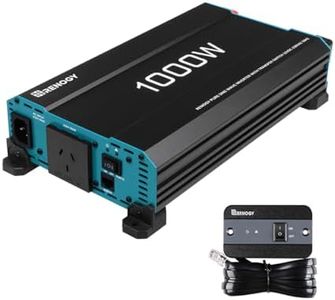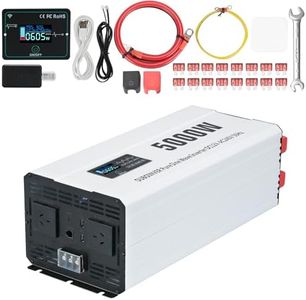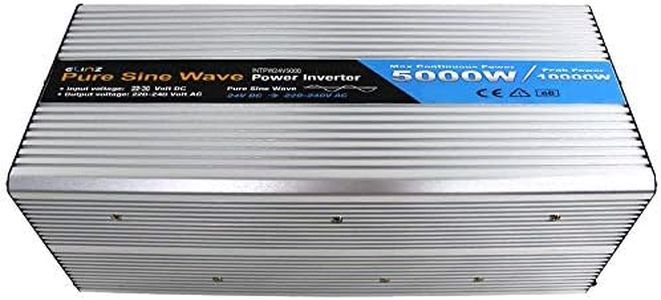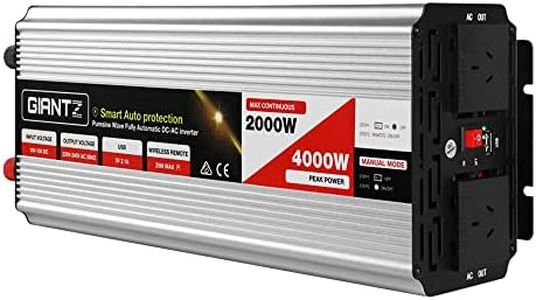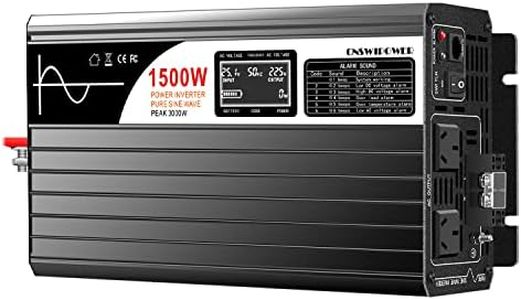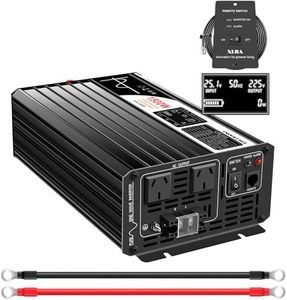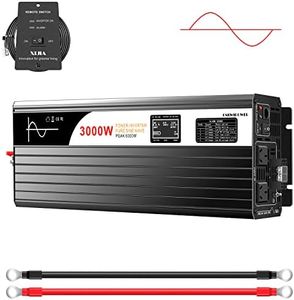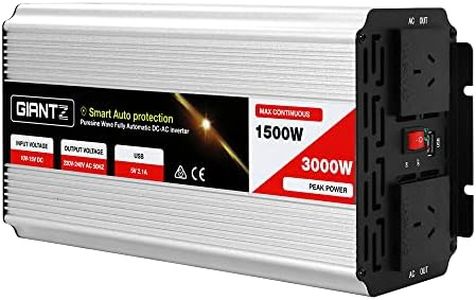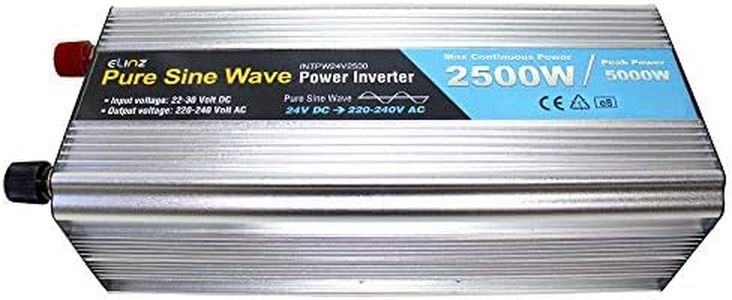We Use CookiesWe use cookies to enhance the security, performance,
functionality and for analytical and promotional activities. By continuing to browse this site you
are agreeing to our privacy policy
10 Best 5000 Inverters
From leading brands and best sellers available on the web.Buying Guide for the Best 5000 Inverters
Choosing a 5000-watt inverter is a significant decision if you want to power devices during outages, go off-grid, or set up a mobile power solution. The inverter takes direct current (DC) power, usually from batteries or solar, and turns it into alternating current (AC), which most household electronics require. To find the best fit for your needs, you should consider a few key specifications and reflect on your typical usage scenarios. Think about what devices or appliances you need to run, their total wattage, and any special power requirements. Getting the right inverter isn’t just about the biggest number—it’s about matching the inverter’s abilities with what you’ll actually use safely and efficiently.Output WaveformThe output waveform describes the shape of the electricity the inverter provides. The most common types are pure sine wave and modified sine wave. Pure sine wave inverters create power that closely mimics the electricity from your utility grid, making them suitable for all types of appliances, especially sensitive electronics like laptops, medical devices, or variable speed motors. Modified sine wave inverters are less expensive and work for simple tools or resistive loads like incandescent lights but may cause issues or noise in delicate devices. If you plan to power a mix of electronics, especially anything sensitive or high-end, a pure sine wave is a safer bet. If your needs are simpler, a modified sine wave could do the job.
Input VoltageThis refers to the DC voltage the inverter is designed to take from your battery bank or solar system, typically 12V, 24V, or 48V. Choosing the right input voltage depends on your battery setup and how far you need to transmit power. Lower voltage systems like 12V are common in smaller setups and vehicles, but for higher power like 5000 watts, 24V or 48V systems are more efficient and safer because they require lower current, reducing cable size and heat loss. Match the inverter input to the voltage of your battery storage for optimal performance and safety.
Continuous Power vs. Peak PowerContinuous power is the amount of wattage the inverter can supply for extended periods, while peak (or surge) power is a higher amount that the inverter can handle briefly, usually for a few seconds, to account for appliance startup surges. Some devices, like fridges or pumps, draw much more power when switching on compared to running. A 5000-watt inverter must meet or exceed the overall running and peak requirements of your appliances. When choosing, list out what you need to run at once and pay extra attention to their startup wattage so you pick an inverter capable of handling those surges without shutting down.
EfficiencyInverter efficiency tells you how much of the battery's power actually gets converted into usable electricity, typically shown as a percentage. Higher efficiency means less energy lost as heat. Efficient inverters reduce battery drain and help you get the most out of your stored energy. Efficiency ratings for good inverters are typically between 85% and 95%. If you'll be running your system regularly or for long periods, prioritize higher efficiency, as it saves energy and may extend battery life.
Number and Type of OutletsThis spec determines how many devices you can connect at once and what types of plugs the inverter can accept. Some inverters offer multiple AC outlets, USB ports, or even 220V outputs. Think about how many things you’ll realistically need to plug in at the same time and what kinds of connection they require. If you have a variety of equipment or international appliances, look for inverters with versatile outlet options that suit your use.
Protection FeaturesSafety features like overload protection, short circuit protection, overvoltage, low voltage alarms, and temperature cut-offs are all essential to protect both the inverter and your connected devices. These features can prevent damage due to wiring errors, excessive load, or overheating. When choosing, favor inverters with comprehensive protection so you can use your system confidently, especially if it's for critical or sensitive applications.
Cooling SystemA powerful inverter will produce heat, so cooling is important. Inverters may have fans or passive heat dissipation systems. Fans are good at keeping temperatures stable but can add noise, while passively cooled units are quieter but might not manage heat as well at full load. If you plan to run heavy loads often or in warm environments, prioritize models with robust cooling systems to ensure reliability and a longer lifespan.
Size and Install OptionsThe physical size and mounting options of the inverter should match your available installation space. Larger inverters offer more ports and features, but you need to ensure you have enough space for safe ventilation and installation near your batteries. If you're outfitting a boat, RV, or remote cabin, double-check measurements and mounting options for a secure fit.


